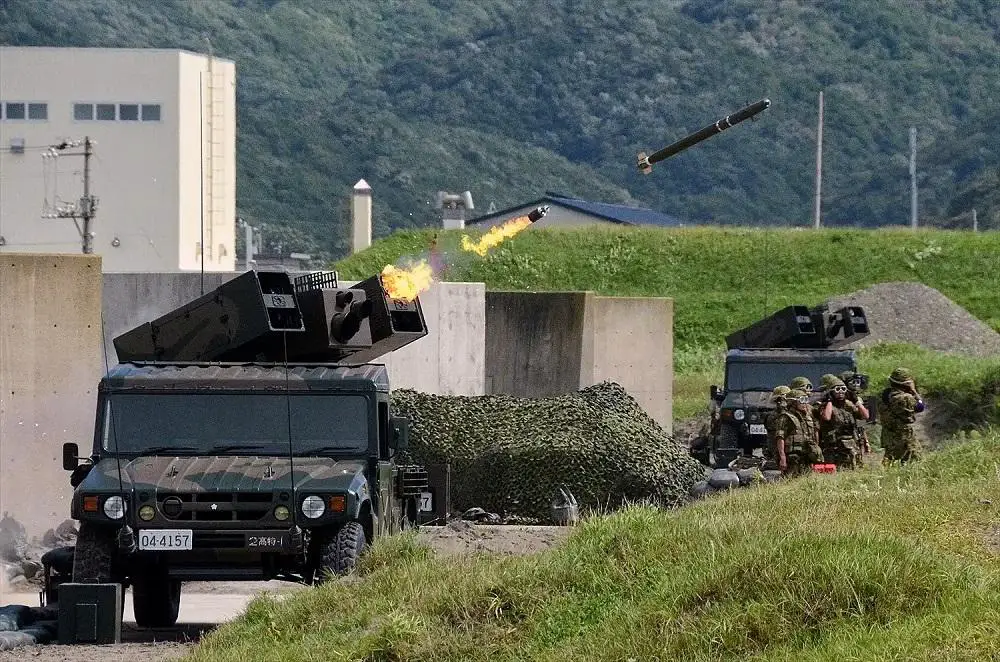The Japan Ministry of Defense plans to develop a new domestically produced surface-to-air missile (SAM) to counter drone attacks and deploy it to its troops in 2029. The new domestically produced short-range surface-to-air guided missile for the Japan Ground Self-Defense Force (JGSDF, Rikuji) called “Kin-SAM” (the word “kin” is Japanese for “near”). The current Type 91 Kin-SAM (91-shiki Keitai Chitaik Yddan) can only respond to combat helicopters, but the new “Kin-SAM” can also intercept medium-sized drones and cruise missiles. It is expected to complete development by 2026 and be deployed to troops in 2029.
The Type 91 Kin-SAM is a Japanese man-portable air-defense system (MANPADS). The Type 91 is sometimes mistaken as a Japanese-made version of the Stinger. It was created in order to replace its stock of American-made Stinger MANPADS, since the Type 91 has a better guidance system, which consist of both visible light and infrared system options. In the ranks of the JSDF, the Type 91 is colloquially known as Hand Arrow. The Type 91 is currently exclusively used by the JSDF and has not been exported overseas to date due to previous interpretations of post-war constitutional restrictions and the laws arising from them.

The missile is similar to the Stinger missile it replaced with two solid rocket motors, an initial booster motor and a sustainer. The imaging seeker uses 3rd generation-made infrared and ultraviolet guidance systems. The missile travels at a Mach speed of 1.9. The Type 91 Kin-SAM comes with the rocket launcher, an external battery pack, IFF system, missiles and other training equipment. The missile weights at 11.5 kilograms, which is lighter than the Stinger as it has a weight of 15.2 kilograms. The maximum range is 5 km and minimum range is 0.3 km. Maximum engagement altitude is about 3.5 km under optimal conditions.
In 2007, the Type 91 Kai was delivered by Toshiba after being produced to replace the original Type 91 with several improvements including its motor and capability to be fired in the dark and low altitude performance. On launch, the missile records the target’s image profile and is able to ignore defensive countermeasures such as flares. Type 91 Kai, was delivered to replace the original. A vehicle based variant, the Type 93 Surface-to-air missile launcher, has also been developed. This is also made by Toshiba Heavy Industries. The self-propelled surface-to-air missile system is mounted on Toyota-made Kokidoshas.
















